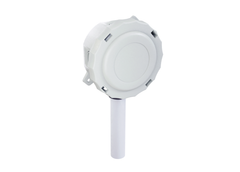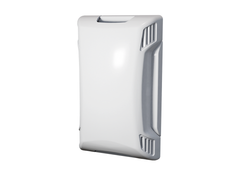Scroll to view all
duct humidity sensors
View Details


HW2XA2A | RH, Wall, 2%, Temp, Xmtr | Veris
Brand: Veris
SKU: HW2XA2A
View Details


A / RH3-D | 3% Accuracy RH Humidity Sensor | Duct Humidity Sensor | ACI
Brand: ACI
SKU: A/RH3-D
View Details


HW2LA2A | RH, Wall, LCD, 2%, Temp, Xmtr | Veris
Brand: Veris
SKU: HW2LA2A
View Details


VH7270K1000 | Humidistat | 0-10VHum | Sw Hum | Sw Dehum | Prprtnl HighLim | OutRst | Viconics
Brand: Viconics
SKU: VH7270K1000
View Details


229150 | Digitial Humidistat - 10% to 75% RH Control Range | Braeburn (OBSOLETE)
Brand: Braeburn
SKU: 229150
View Details


A / RH3-TT1K-D-BB-2 | DUCT, 2G BB, 3% | ACI
Brand: ACI
SKU: A/RH3-TT1K-D-BB-2
View Details


HEW2VSTD | RH Econ | Wall | 2% | 0-10V | Temp | 10k T2 | Veris
Brand: Veris
SKU: HEW2VSTD
View Details


A / RH2-R | 2% Accuracy RH Humidity Sensor | Room Zone Wall Humidity Sensor | ACI
Brand: ACI
SKU: A/RH2-R
View Details


HEW3VSTG | RH Econ | Wall | 3% | 0-10V | Temp | 10k CPC | Veris
Brand: Veris
SKU: HEW3VSTG
View Details


A / RH3-AN-O | OUTSIDE, EH, 3% | ACI
Brand: ACI
SKU: A/RH3-AN-O
View Details


A / RH2-1K-2W-O | OUTSIDE, EH, 2% | ACI
Brand: ACI
SKU: A/RH2-1K-2W-O
View Details


229100 | Manual Humidistat - 10% to 60% RH Control Range | Braeburn (OBSOLETE)
Brand: Braeburn
SKU: 229100
View Details


A / RH3-CP-D | DUCT, EH, 3% | ACI
Brand: ACI
SKU: A/RH3-CP-D
View Details


A / RH2-CP-D | DUCT, EH, 2% | ACI
Brand: ACI
SKU: A/RH2-CP-D
View Details


A / RH2-AN-D | DUCT, EH, 2% | ACI
Brand: ACI
SKU: A/RH2-AN-D
View Details


HT1W-2AUX | Humidity Wall 2%NoLCD NoTemp, Surface | Senva Sensors
Brand: Senva Sensors
SKU: HT1W-2AUX
View Details


A / RH3-CP-D-BB | DUCT, BB, 3% | ACI
Brand: ACI
SKU: A/RH3-CP-D-BB
View Details


A / RH3-10K-E1-D | DUCT, EH, 3% | ACI
Brand: ACI
SKU: A/RH3-10K-E1-D
View Details


HEW2MSTA | RH Econ | Wall | 2% | 4-20mA | T-Xmtr | Veris
Brand: Veris
SKU: HEW2MSTA
View Details


HEW5MSTA | RH | Economy | Wall | 5% | 4-20mA | T-Xmtr | Veris
Brand: Veris
SKU: HEW5MSTA
View Details


HEW2VSTR | RH Econ | Wall | 2% | 0-10V | Temp | 10k US | Veris
Brand: Veris
SKU: HEW2VSTR
Committed to customer satisfaction
as experts in Duct Humidity Sensors
Recently Viewed
Popular Products
View all →
AFB24-SR | Damper Actuator | 180 in-lb | Spg Rtn | 24V | Modulating | Belimo
Brand: Belimo
SKU: AFB24-SR
AMB24-3 | Damper Actuator | 180 in-lb | Non-Spg Rtn | 24V | On/Off/Floating Point | Belimo
Brand: Belimo
SKU: AMB24-3
LMB24-3-T | Damper Actuator | 45 in-lb | Non-Spg Rtn | 24V | On/Off/Floating Point | Belimo
Brand: Belimo
SKU: LMB24-3-T
EISK5-100T | 5-port 10BASE-T/100BASE-TX Skorpion switch, DIN-rail mount | Contemporary Controls
Brand: Contemporary Controls
SKU: EISK5-100T
FSLF120 US | Fire & Smoke Actuator | 30 in-lb | Spg Rtn | 120V | On/Off | 1m Cable | Belimo
Brand: Belimo
SKU: FSLF120 US
LF120 US | Damper Actuator | 35 in-lb | Spg Rtn | 120V | On/Off | Belimo
Brand: Belimo
SKU: LF120 US
iO-WR | Wireless Relay | iO HVAC Controls
Brand: iO HVAC Controls
SKU: iO-WR
ZTH US | Handheld programming tool with ZK1-GEN | ZK2-GEN and ZK6-GEN. | Belimo
Brand: Belimo
SKU: ZTH US

